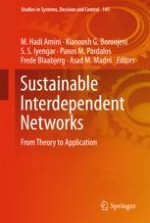This book focuses on the theory and application of interdependent networks. The contributors consider the influential networks including power and energy networks, transportation networks, and social networks. The first part of the book provides the next generation sustainability framework as well as a comprehensive introduction of smart cities with special emphasis on energy, communication, data analytics and transportation. The second part offers solutions to performance and security challenges of developing interdependent networks in terms of networked control systems, scalable computation platforms, and dynamic social networks. The third part examines the role of electric vehicles in the future of sustainable interdependent networks. The fourth and last part of this volume addresses the promises of control and management techniques for the future power grids.
